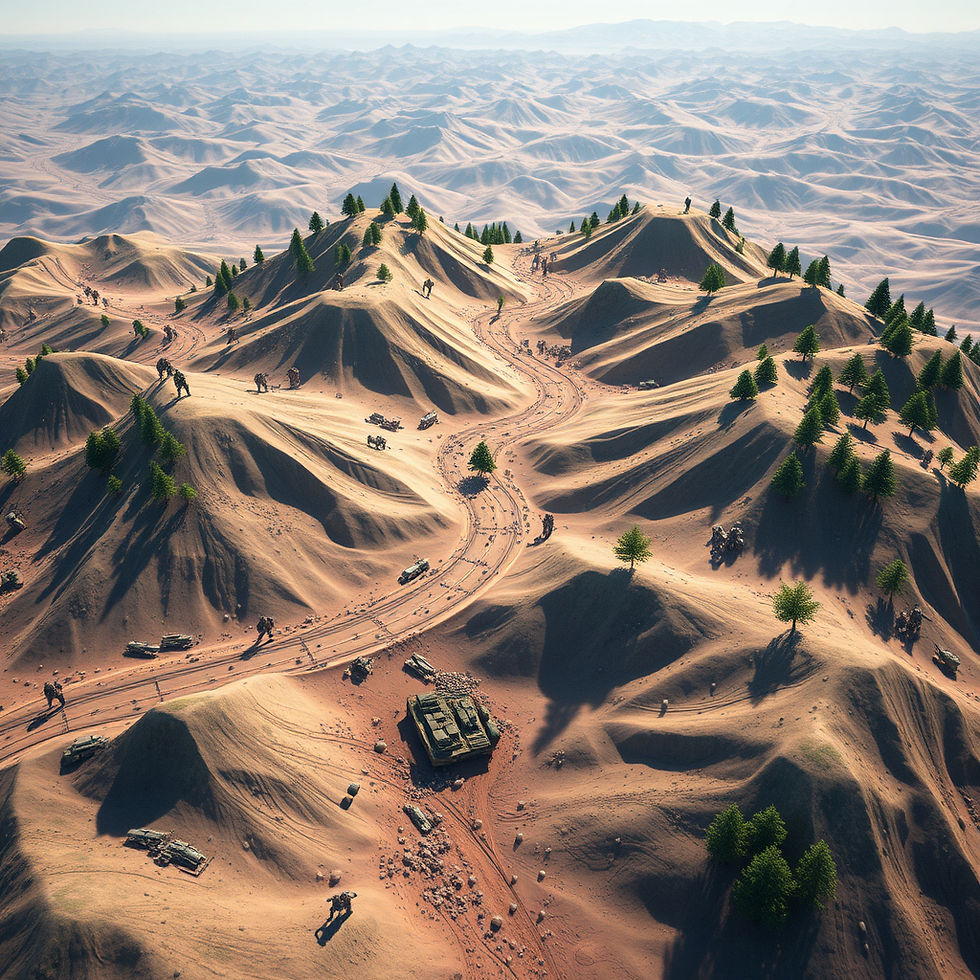3D Modeling for Real-Time Simulations: How GeniusCrate Brings Hyper-Realism to Life
- Geniuscrate

- Aug 12
- 2 min read

In today’s training and simulation world, 3D modeling is no longer just about visual appeal; it’s about accuracy, efficiency, and performance in real-time environments. Whether it’s a virtual training scenario, a defense simulation, or an industrial safety drill, the quality of the 3D models directly determines how immersive and effective the experience will be.
At GeniusCrate, we specialize in creating simulation-ready assets that not only look stunning but also function flawlessly within the technical constraints of modern engines like Unity, Unreal, and custom simulation platforms.
Why 3D Modeling Matters for Simulations
A realistic simulation hinges on the credibility of its environment. The brain can instantly detect inaccuracies in scale, lighting, or texture, which can break immersion and reduce training effectiveness. High-quality 3D modeling ensures:
Visual Authenticity – Environments and objects that mirror real-world counterparts.
Functional Accuracy – Interactive elements behave as they would in real life.
Performance Stability – Smooth performance without stutters or lag.
When done right, 3D models don’t just decorate the simulation, but they become the simulation.
What Should Be Done in Professional Simulation Modeling
For simulations to succeed, every asset needs to meet a professional standard, which means:
Precise Scaling – Assets built to real-world measurements.
Optimized Geometry – Enough detail for realism without overloading hardware.
High-Quality Texturing – PBR textures that respond accurately to light and weather changes.
Consistent Style – Environments, props, and characters that feel cohesive.
Interactivity Integration – Models ready for physics, animations, and user interaction.
These factors determine whether a simulation is an immersive learning tool or a clunky digital mock-up.
How GeniusCrate Delivers Simulation-Ready Assets
At GeniusCrate, we approach 3D modeling as a blend of artistry and engineering. Every project begins with research into the real-world counterpart, from detailed reference photography to material studies, so that we replicate not only the look but also the feel of the subject.
Here’s what sets our process apart:
Engine-Ready from Day One – Models are delivered with correct units, pivots, and shaders for the target platform.
Performance-First Approach – We balance polygon counts, LODs, and texture resolutions to ensure smooth real-time performance, even in large-scale simulations.
Hyper-Realistic Detailing – From subtle surface imperfections to accurate wear patterns, our textures add depth that goes beyond “clean” computer graphics.
Custom-Tailored for Purpose – Whether it’s a cockpit for defense training or machinery for industrial safety, we adapt models to the exact scenario.
The GeniusCrate Difference
The real advantage of working with GeniusCrate is that we think ahead. Our models aren’t just visually impressive, but they’re strategically built to integrate into broader simulation systems. That means fewer revisions, faster deployment, and a final product that performs under real-world conditions.
By using the best tools in the industry, from Unreal and Unity to Blender and proprietary optimization workflows, we deliver assets that meet the high demands of defense, aerospace, industrial, and medical training simulations.
Conclusion
3D modeling for simulations is more than creating shapes, it’s creating the foundation for immersive, effective, and efficient training.
At GeniusCrate, we don’t just model objects; we model possibilities. We create simulations that feel real, perform flawlessly, and leave a lasting impact on the user.



Comments